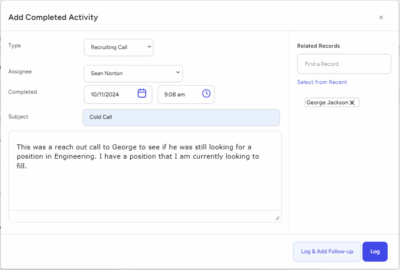My first journey to the Emerald Coast beaches of the Florida panhandle began with a stern warning from the resident lifeguard. He imparted upon me his wisdom and the reality of this intended day of fun and SPF 30, “When you go into that water, remember that there are two kinds of fish out there: predators and food. Guess where you stand in the food chain!” I approached the sand with a clearer and wiser perspective about wave riding!
Today’s recruiting landscape offers enormous opportunity that, if effectively exploited, can land you on the beach in early retirement at the top of the financial food chain. However, you must face certain realities. The Great Recession presented a long period where recruiters should have taken stock in what they were doing and what challenges the recovery would put before them. Some seized this with clarity and ambition. They came out of the trenches armed with new tools and a commitment to both excellence and its inevitable reward, wealth and security.
Others held on to what they did before their markets collapsed, hunkered down, and waited until enough smoke cleared to start doing it all over again. After all, they made a living before, “Why not now?” Still others, mainly our friends in HR, seized the moment to scour the land and plunder its applicant watering holes. They stuffed everyone they could into nice, neat records so that when the economy strengthened and their employer started hiring once again, they would be armed with a massive database of people. Let’s explore these three groups in the “Recruiting Food Chain” and evaluate the potential of their strategies and impact on us.
#1: Ambitious Visionaries
We will refer to them as the predators. This group is comprised of both previous top producers and the enlightened people, all of whom recognize that quality of service and strict client criteria are quintessential to creating wealth in recruiting. They aggressively pursue clients seeking multi-dimensional, talented candidates. Their clients must exhibit a willingness to embrace a process that, once effectively sold, is a compelling means to locate critically required people. Hiring managers among these clients are just as busy as their more transactional contemporaries. They are, however, aware of the importance of working with a professional recruiting consultant. The extent of their cooperation goes beyond a few minutes and a couple of extra questions. These wiser hiring managers understand that the recruiter must interface directly with the individual in their company making the final hiring decision.
Finally, these clients subscribe to the importance of acquiring the very best qualified people through the skilled efforts of an ethical recruiting process and recruiter. Makes sense, right? Of course it does! The fact is, though, that clients like this represent the minority of employers. Take heart in the fact that it takes a small number of clients to exceed your billing ambitions. This group of recruiters has established strict criteria by which they choose their clients and search activity. They realize that these criteria must be reflective of the process they are ready to apply. This group is not defined exclusively by the terms by which they work, i.e., retained or contingency. These search consultants are best defined by the value-added, consultative service they apply to critical candidate requirements where urgency, cooperation and sizzle exists. They are not predatory in their actions, but they choose their projects as wisely as a predator. They certainly have fewer blank deposit slips than most.
#2: Scavengers
I do not mean to insensitively denigrate anyone by using this label. Rather, I mean to portray an accurate picture of how they are typically seen by those they seek to pay them fees. Scouring every source from the job boards to the Web and beyond can produce countless names, titles, and in some cases, resumes. Many highly successful, value-added firms avail themselves of this source of intelligence. The practice of cataloging these folks and running the job title duties and dollars of a published or offered job through a computerized matching or searching utility in order to send the “fits” to a company falls a great distance short of anything that resembles service.
This shallow approach is accepted by many firms in their desperate attempt to find people in a very shallow pool of talent. I believe that this conditioned reaction by clients was widely misperceived by recruiters as an accreditation to their methodology of “referral.” A whole lot of HR folks have jumped on this easily replicated process, bought (or renewed) their own subscriptions to the job boards, and of course, are using LinkedIn.
The best thing I have observed about being a full service, value-added search consultant is that in nearly 30 years of practicing this art, I have yet to see a company replicate it. This brings us to the last group.
#3: Human Resources (HR)
We will refer to the third and final group by their actual moniker, HR. Many client company folks were hunkered down during the downturn, trying to hang on until things got better. Many HR people saw an opportunity to develop an internal system by which, at least in theory, they could catalog everyone who they may have some future interest in as an applicant. Once the recovery started, they would be justified in the investments made by the obvious avoidance of the fees they expected to pay to recruiters. Many a recruiter has been “burned” when working in earnest to find a candidate, just to be informed that the company had that person “in the database.” Of course, this nefarious practice is not performed but by a minority of people in HR.
The real dilemma that exists in the scavengers’ approach is that it is no more than a replication of what many companies are now capable of doing by their own means. Many of the current hiring authorities are new to both their roles and the process of working with recruiters. The observation of their predecessors in hiring people taught them the valuable lesson that less is better than more in terms of interface time with recruiters. They also saw the many mishires as a result of a transactional referral process with recruiters. Now that they are in the seat of decision-making, they are more open than ever to embracing the concept of having a lesser number of recruiters at their call. Spending more time in detail with fewer recruiters dramatically increases the odds of offering a critical position to a highly qualified individual. The complexity of the positions we seek to fill today cannot be serviced effectively by limited knowledge or interface with those other than hiring decision-makers.
Where do you want to be in the “Recruiting Food Chain”? As a predator . . . or a scavenger? Making the choice also includes a commitment to a consultative, due-diligent process; tough client and search assignment criteria; and ethical practices. Remember that the high road ends at the top.

— — —
Doug Beabout, CPC, a guest writer for the Top Echelon Recruiter Training Blog, has a career that spans 30 years of expertise in recruiting, personnel services, firm ownership, and training. His tenure in recruiting includes building four highly successful businesses and establishing hundreds for others worldwide. Beabout speaks to state, regional, and private recruiter associations. He is a consultant to many corporations and personnel firms. Beabout is currently owner and president of The Douglas Howard Group, a professional recruiting firm, and conducts several online training programs for recruiters and researchers. He can be reached at 850.424.6933 or via email at trainer@recruiterelearning.com.








